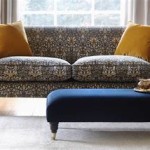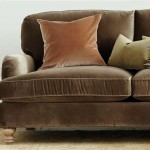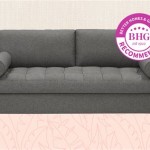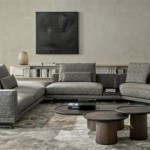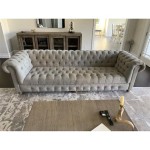Beige Sofa Rug Ideas: Harmonizing Comfort and Style
A beige sofa is a versatile and enduring furniture choice, providing a neutral foundation that can be adapted to various interior design styles. Its inherent adaptability allows it to complement a wide spectrum of colors and textures, making the selection of an appropriate rug crucial for establishing a cohesive and aesthetically pleasing living space. This article explores a range of rug ideas that harmonize with a beige sofa, considering factors such as color, pattern, texture, and size to enhance the overall ambiance of the room.
The selection of a rug to pair with a beige sofa is contingent on several design principles. First, the determination of the desired aesthetic is paramount. Is the intention to create a calming and serene environment, or a vibrant and energetic space? Secondly, the existing color palette of the room must be taken into account. Coordinating the rug with accent colors, wall paint, and other decorative elements ensures a unified and harmonious look. Thirdly, the functional requirements of the space play a role. A high-traffic area may necessitate a durable, stain-resistant rug, while a more relaxed living room might benefit from a softer, more luxurious texture. Finally, the size of the rug in relation to the sofa and the overall room dimensions is critical for creating visual balance and defining the seating area.
Color Coordination Strategies
Color is a fundamental element in interior design, and the rug's color significantly impacts the overall visual appeal of a room. When pairing a rug with a beige sofa, several color coordination strategies can be employed to achieve the desired effect.
Monochromatic Harmony: A monochromatic color scheme utilizes varying shades and tones of the same color. Pairing a beige sofa with a rug in a lighter or darker shade of beige creates a subtle and sophisticated look. This approach is ideal for creating a calming and serene environment. For example, a light cream-colored rug can brighten a room with a darker beige sofa, while a dark beige or taupe rug can add depth and grounding to a room with a lighter beige sofa. The key is to ensure sufficient contrast between the sofa and the rug to prevent them from blending together and appearing indistinct.
Complementary Contrast: Complementary colors are those that sit opposite each other on the color wheel. Using complementary colors creates a visually dynamic and engaging space. For a beige sofa, colors like blue, green, or lavender can provide striking contrast. A rug in a deep navy blue or a vibrant emerald green can create a bold and sophisticated look, while a softer lavender or teal can create a more relaxed and inviting atmosphere. The intensity of the complementary color should be carefully considered to avoid overwhelming the space.
Analogous Accents: Analogous colors are those that sit next to each other on the color wheel. Using analogous colors creates a harmonious and balanced look. For a beige sofa, colors like brown, gold, or orange can provide subtle and sophisticated accents. A rug in a warm brown or a rich gold can enhance the cozy and inviting feel of the room, while a muted orange can add a touch of warmth and energy. These colors naturally complement beige, creating a cohesive and visually pleasing aesthetic.
Neutral Nuances: Sticking with a neutral palette provides a timeless and versatile approach. Grays, whites, and blacks can all work well with a beige sofa, depending on the desired level of contrast. A light gray rug can create a modern and sophisticated look, while a dark gray rug can add depth and drama. A white rug can brighten the space and create a clean and airy feel, while a black rug can ground the room and add a touch of elegance. Layering different neutral tones and textures is key to preventing the space from feeling monotonous.
Pattern and Texture Considerations
Beyond color, the pattern and texture of a rug contribute significantly to the overall aesthetic and tactile experience of a living space. When selecting a rug for a beige sofa, considering the pattern and texture is essential for creating visual interest and adding depth to the room.
Geometric Patterns: Geometric patterns, such as stripes, chevrons, and abstract shapes, can add a modern and dynamic touch to a room. A geometric rug can be particularly effective in a room with a minimalist or contemporary design style. The scale of the pattern should be considered in relation to the size of the room and the furniture. A larger pattern can make a small room feel more spacious, while a smaller pattern can add a subtle touch of visual interest. The colors within the geometric pattern should complement the beige sofa and the overall color palette of the room.
Floral and Botanical Motifs: Floral and botanical motifs can add a touch of elegance and sophistication to a room. A floral rug can be particularly effective in a room with a traditional or romantic design style. The size and scale of the floral pattern should be carefully considered to avoid overwhelming the space. A large-scale floral pattern can create a dramatic statement, while a smaller-scale floral pattern can add a more subtle touch of visual interest. The colors within the floral pattern should harmonize with the beige sofa and the surrounding décor.
Abstract Designs: Abstract designs can add a contemporary and artistic touch to a room. An abstract rug can be particularly effective in a room with an eclectic or bohemian design style. The beauty of abstract designs lies in their ability to evoke emotion and create a sense of visual intrigue. The colors and shapes within the abstract pattern should complement the beige sofa and the existing artwork in the room. Texture also plays a crucial role in abstract rugs, adding dimension and tactile appeal.
Texture Variety: The texture of a rug can significantly impact the overall feel of a room. A plush, high-pile rug can add warmth and comfort, while a low-pile rug can be more practical for high-traffic areas. A shag rug can add a touch of luxury and glamour, while a jute or sisal rug can add a natural and earthy feel. Layering different textures can create a more dynamic and visually interesting space. For example, layering a smaller sheepskin rug on top of a larger jute rug can add both warmth and texture to the room.
Size and Placement Guidelines
The size and placement of a rug are crucial considerations for creating a visually balanced and functional living space. A rug that is too small can make the room feel disjointed and uninviting, while a rug that is too large can overwhelm the space. Proper placement ensures the rug anchors the seating area and creates a cohesive and unified look.
All Legs On: For a truly grounded and luxurious feel, the rug should be large enough to accommodate all the legs of the sofa and any accompanying chairs or side tables. This approach creates a defined seating area and visually anchors the furniture within the space. This is often the preferred method for larger rooms or spaces that aim for a more formal and sophisticated aesthetic.
Front Legs On: A commonly used approach is to place the front legs of the sofa and any chairs or side tables on the rug. This approach creates a sense of connection between the furniture and the rug, while still allowing some of the floor to be visible. This is a versatile option that works well in a variety of room sizes and styles. The rug should extend beyond the front legs of the sofa by at least 12 inches to ensure a balanced and proportional look.
Floating Furniture: In smaller spaces, or when opting for a more minimalist aesthetic, the rug can be placed solely in the center of the seating area, with no furniture legs resting on it. This approach defines the seating area without completely covering the floor. This method works best when the rug is large enough to accommodate a coffee table and allow ample space for foot traffic around the seating area. Visual considerations related to the distance from the rug to the sofa should be taken into account.
Room Dimensions: The size of the rug should be proportional to the size of the room. In a small room, a smaller rug may be sufficient to define the seating area. In a larger room, a larger rug may be necessary to fill the space and create a sense of warmth and cohesion. Measuring the room carefully and planning the rug placement beforehand is essential for ensuring a visually balanced and functional space. Consider the flow of traffic and ensure that the rug does not impede movement or create a tripping hazard.
By carefully considering color coordination, pattern and texture, and size and placement, one can effectively select a rug that complements a beige sofa, enhancing the overall aesthetic and functionality of the living space. The interplay of these elements creates a harmonic ambiance that speaks to personal style and preferences.

What Color Rug Goes With A Beige Couch 15 Ideas Living Room Area Rugs

34 Effortless Ways To Decorate Around A Beige Couch

34 Effortless Ways To Decorate Around A Beige Couch Living Room Inspiration Designs Decor

Living Room Inspiration West Elm Beige Sofa Couch Decor

34 Effortless Ways To Decorate Around A Beige Couch

Beige Color Guide Tips For A Natural Aesthetic Living Spaces

Loranger Area Rug Beige Couch Living Room Brown

Beige Sofa Design Ideas

Boutiquerugs Com On Instagram If You Re A Fan Of Traditional Designs And Block Prints Beige Couch Living Room Sectional Sofa

34 Effortless Ways To Decorate Around A Beige Couch
Related Posts



